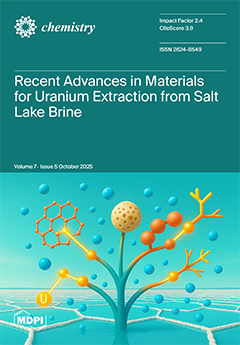A series of twenty-five salicylic acid derivatives was synthesized and structurally characterized by
1H and
13C-APT NMR and IR spectroscopic techniques, and HRMS analysis. The derivatives were subjected to biological evaluation against species of the genus
Candida (
C. albicans ATCC
[...] Read more.
A series of twenty-five salicylic acid derivatives was synthesized and structurally characterized by
1H and
13C-APT NMR and IR spectroscopic techniques, and HRMS analysis. The derivatives were subjected to biological evaluation against species of the genus
Candida (
C. albicans ATCC 90028,
C. albicans CBS 5602,
C. tropicalis CBS 94, and
C. krusei CBS 573). In assays were used the broth microdilution method to determine the minimum inhibitory concentration (MIC) and verify the probable mechanism of action for antifungal activity. In the antifungal evaluation, compounds
N-isobutyl-2-hidroxybenzamide (
14),
N-cyclohexyl-2-hydroxybenzamide (
15),
N-benzyl-2-hydroxybenzamide (
16),
N-4-methylbenzyl-2-hydroxybenzamide (
17),
N-4-methoxybenzyl-2-hydroxybenzamide (
18),
N-2,4-dimethoxybenzyl-2-hydroxybenzamide (
19),
N-4-fluorbenzyl-2-hiydroxybenzamide (
22), and
N-4-chlorobenzyl-2-hydroxybenzamide (
23) were bioactive against at least one fungal strain. The compound with the best antifungal profile was
N-cyclohexyl-2-hydroxybenzamide (
15), which presented a MIC of 570.05 μM against most of the strains tested. The tests using ergosterol and sorbitol demonstrated that the compound does not act by altering cell wall functions or the plasmatic membrane in
Candida species. The in silico analysis of
15 for antifungal activity in various biological targets suggested a probable multitarget mechanism. Therefore, the synthesis of salicylic acid derivatives resulted in compounds with a good antifungal profile.
Full article





